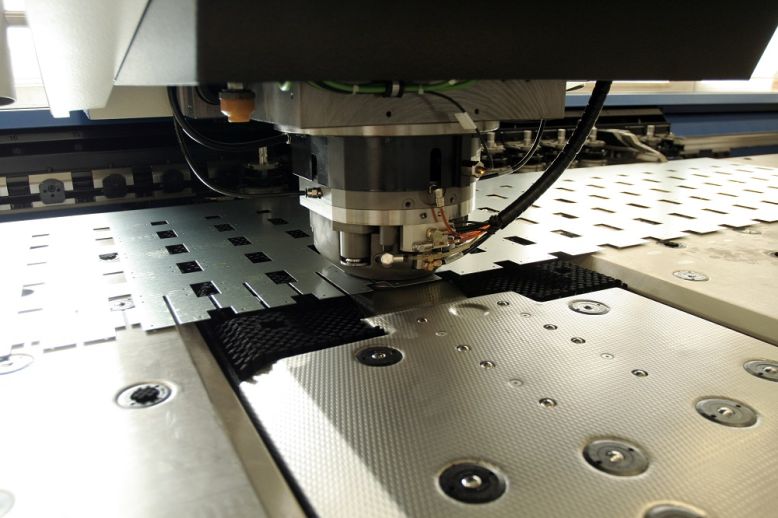
The vibrant industrial landscape of China is home to metal stamping, a cornerstone of manufacturing. With its precision, efficiency, and versatility, metal stamping has become a linchpin process in countless industries. In this comprehensive guide, we explore the importance, processes, technological advancements, market trends, and the future outlook of Metal Stamping china.
Metal stamping: An overview
Stamping, also known as pressing, involves the use of dies and presses to shape flat sheet metal. In order to produce intricate metal components, a series of steps are required, including blanking, piercing, forming, bending, and coining. There are many uses for these components across industries, including automotive body panels, electronic enclosures, and household appliances.
China's Metal Stamping Industry
Known for its robust manufacturing infrastructure, skilled workforce, and technological prowess, China dominates metal stamping. From small workshops to large-scale factories equipped with cutting-edge equipment, the country has a vast network of metal stamping facilities. With this extensive ecosystem, China can accommodate diverse manufacturing needs with cost-effective solutions that do not compromise on quality or precision.
Metal stamping processes
Each process plays a crucial role in shaping the final product when it comes to metal stamping:
The process begins with the design of the desired component and the creation of custom tooling, including dies and molds.
Choosing the right material for metal stamping is crucial. Common materials include steel, aluminum, copper, and alloys, each offering unique properties.
The process of blanking involves cutting the sheet metal into the desired shape, while that of piercing involves creating holes or features within it.
Bending involves altering the shape of the metal without cutting it, whereas forming involves applying pressure to shape the metal into complex geometries.
Coining ensures dimensional accuracy and quality by enhancing the precision and surface finish of stamped parts.
Advances in metal stamping technology
Recent technological advancements have revolutionized the metal stamping industry, improving efficiency, precision, and productivity.
Machining with Computer Numerical Control (CNC): CNC technology automates machining operations, so that precise and repeatable results can be achieved.
Servo-driven presses offer greater control over the stamping process, resulting in better accuracy, reduced cycle times, and reduced energy consumption.
By using advanced simulation software, manufacturers can optimize tooling design, material use, and production workflows by simulating the stamping process virtually.
The use of additive manufacturing techniques, such as 3D printing, enables rapid prototyping and customization of products, complementing traditional metal stamping processes.
Opportunities and trends in the market
With increasing demand from automotive, electronics, aerospace, and construction sectors, China's metal stamping market is experiencing steady growth. Key trends driving the market include:
Metal stamping plays an important role in providing automobile components, including body panels, chassis parts, and interior parts, as China emerges as the world's largest automotive market.
As smartphones, tablets, and wearables become more common, the demand for precision-stamped components, including connectors, heat sinks, and casings, increases.
Metal stamping is adopting sustainable manufacturing practices and lightweight materials to meet China's ambitious carbon neutrality goals.
Manufacturing manufacturers are adopting flexible stamping processes to be able to produce small batches of custom-designed components because consumers are increasingly seeking personalized products.

Challenges and outlook for the future
The future of metal stamping in China appears promising, buoyed by technological advancements, expanding industrial capabilities, and evolving market dynamics. However, the industry faces several challenges, including:
China faces stiff competition from emerging manufacturing hubs in Southeast Asia and South Asia, prompting continuous innovation and efficiency improvements.
Several factors may disrupt the smooth operation of metal stamping facilities, including trade tensions, shortages of raw materials, and logistic bottlenecks.
The demand for skilled technicians and engineers capable of operating and maintaining advanced stamping machinery is increasing as manufacturing processes become increasingly automated and digitized.
Chinese metal stamping products need to maintain stringent quality control standards to maintain their reputation in domestic and international markets, which requires investment in quality assurance systems. know more
In conclusion
The metal stamping industry in China has a unique blend of tradition and innovation, combining centuries-old manufacturing methods with cutting-edge technology to produce high-quality components for worldwide consumers. As China continues to solidify its position as a manufacturing powerhouse, metal stamping remains a cornerstone of its industrial landscape, driving innovation, growth, and economic prosperity.
Understanding metal stamping processes, taking advantage of technological advancements, and embracing market trends will allow manufacturers to unlock new opportunities and navigate challenges in the dynamic industry of China's metal stamping.